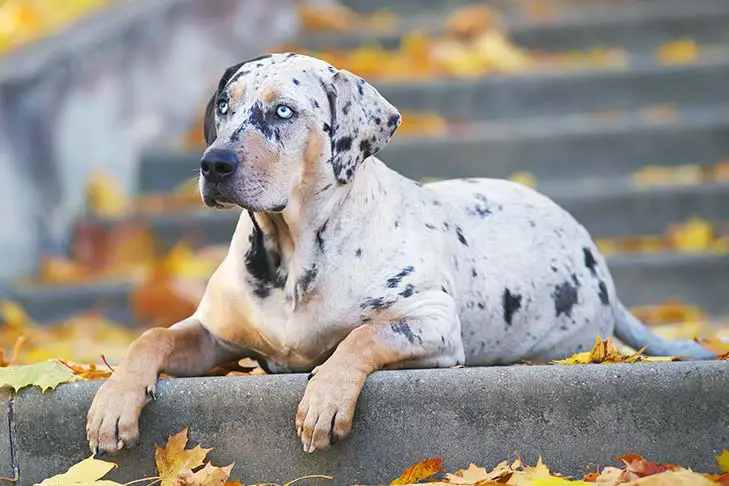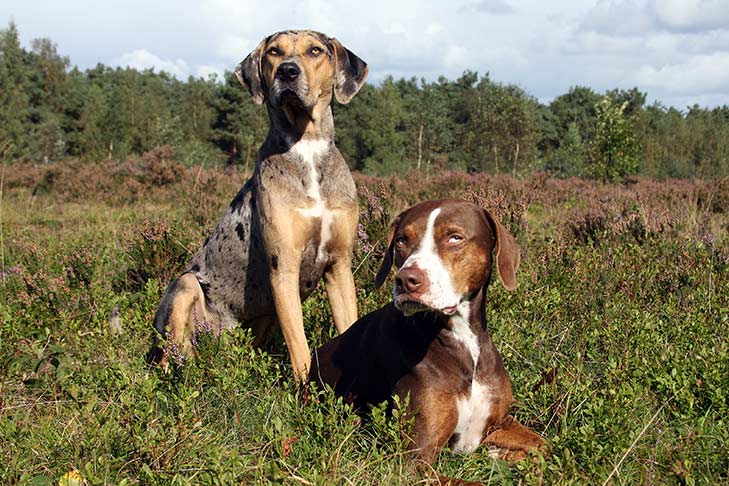The Catahoula Leopard Dog is a robust, multi-purpose working dog that also possesses agility and stamina. They are serious at business and lighthearted at home. The medium-sized, short-coated Catahoula Leopard Dog is distinguished by its various different coat and eye colors and patterns. Catahoulas are the only breed of dog to have historically originated in the state of Louisiana; the word is of Choctaw origin and is translated as “sacred lake.” The breed can be independent, possessive, and protective, thus they need strict guidance and early socialization. They do not tolerate mistreatment and will stand up for themselves if necessary for the same reasons. Once they are aware of their place within the family, they are tender, devoted, and compassionate. They are also known as Catahoula Hog Dogs and are utilized as watchdogs, guard dogs, bay dogs, tree dogs, stock dogs, and, of course, devoted friends.
Catahoula Leopard Dog
Average sizes and life
expectancy of the breed.
Height
22-24 inches
Weight
22-24 inches
Life Expectancy
22-24 inches
Breed Traits & Characteristics
About the Breed

Owning a dog is not just a privilege; it’s a responsibility. They depend on us for, at minimum, food and shelter, and deserve much more. When you take a dog into your life, you need to understand the commitment that dog ownership entails.
 Health
Health
 Grooming
Grooming
 Exercise
Exercise
 Training
Training
 Nutrition
Nutrition
History
In 1539, when the Spanish explorer Hernando de Soto landed in Florida and began his expedition through the Southeastern United States, his scribes noted there was only one species of domestic animal in North America: the Native American dog, which looked like a wolf but barked like a dog. These native dogs were crossed with the “bloodhounds, mastiffs, and greyhounds” brought by the Spanish explorers. In Northern Louisiana, the Native Americans called these new dogs “Wolf Dogs.” Once the French arrived with their hounds, they were crossbred again, resulting in today’s Catahoula Leopard Dog.
The origin of the Catahoula’s working instincts is a mystery: the early settlers of Central Louisiana, specifically the region around Catahoula Lake, used these crossbred dogs to corral and catch the wild hogs and cows that ran amok there, and this practice evolved into a deliberate strategy for controlling the wild herds. The Catahoula developed a distinct method of managing the stock that distinguishes them from other herding and working breeds. They erect a “canine fence” around the herd, and within this “fence,” the dog’s handler controls the untamed herd. Breeders of Catahoula Leopard Dogs attach great attention to this canine’s innate working aptitude. He must possess these working instincts in order to be a true Catahoula, regardless of his looks.



